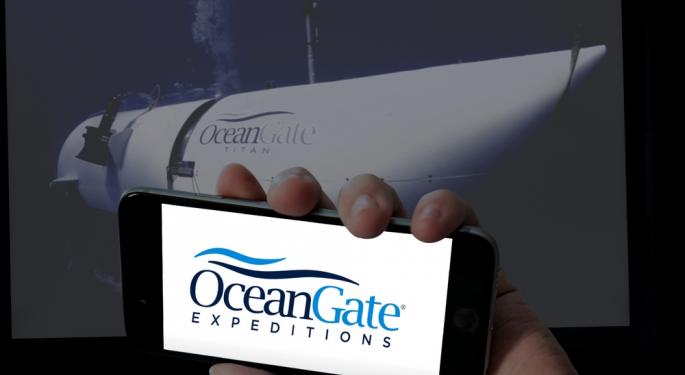Titan Sank 'Like An Arrow' For 48 Seconds Before Imploding, Expert Paints Grim Picture
Some elements of this story were previously reported by Benzinga, and it has been updated.
A recent study proposes a harrowing scenario that unfolded inside OceanGate's "Titan" submersible, shedding light on the tragic final moments experienced by the five crew members, including the late OceanGate CEO Stockton Rush, before the vehicle's disastrous implosion in mid-June.
What Happened: The implosion, a catastrophic event that drew media attention and in-depth analysis, was detected by the U.S. Navy as an anomalous occurrence around the time Titan's communication went silent on Sunday, June 18.
José Luis Martín, a submarine expert with a Ph.D. in electrical engineering from the University of the Basque Country in Spain, issued a study on the event that painted a more grim picture of the scenario.
In his analysis, Martín speculates that the crew was likely awake and aware of their impending doom in the 48 seconds leading up to the Titan's implosion.
His study, informed by parameters including the submersible’s weight, thrust, speed, mass, acceleration and the coefficient of friction of water against a falling body, suggests that a sudden electrical failure could have triggered a destabilization and a subsequent uncontrollable descent into the ocean depths.
The disruption likely caused the passengers to lose their balance, leading to a terrifying, and undoubtedly chaotic, final minute inside the submersible.
Martín speculates that since the Titan submersible lost communication with its support vessel at 11:15 a.m., and the electrical went out, it nose-dived for between 48 seconds and 1 minute and 11 seconds before imploding.
During this time, as noted above, the crew members would have lost their balance and possibly fallen over each other. The sudden loss of propulsion likely caused the 400 kilograms (881.84 pounds) of passengers in the front of the submersible to destabilize the vehicle, forcing it to descend “like an arrow.”
Read Also: Did The Simpsons Predict The Titanic Sub Disaster? A 17-Year-Old Episode Goes Viral
The expert said that the pressure-resistant hull of the Titan contracted under sudden pressure increase, while the porthole material, possessing different properties, failed to do so. The non-uniform deformation could have resulted in a micro-fissure, Martín said, letting in water at a high pressure which caused the immediate implosion.
Investigations into the disaster are ongoing as officials from the U.S., Canada, France, and the United Kingdom collaborate to comprehend the full scale and causes of the June 18 accident.
Read Next: Innovation Or Negligence? OceanGate’s Tragic Consequences Of Betting On Inexperience
Photo: Shutterstock
© 2025 Benzinga.com. Benzinga does not provide investment advice. All rights reserved.
Posted-In: engineering ICYMI José Luis Martín OceanGateNews Topics Opinion General



